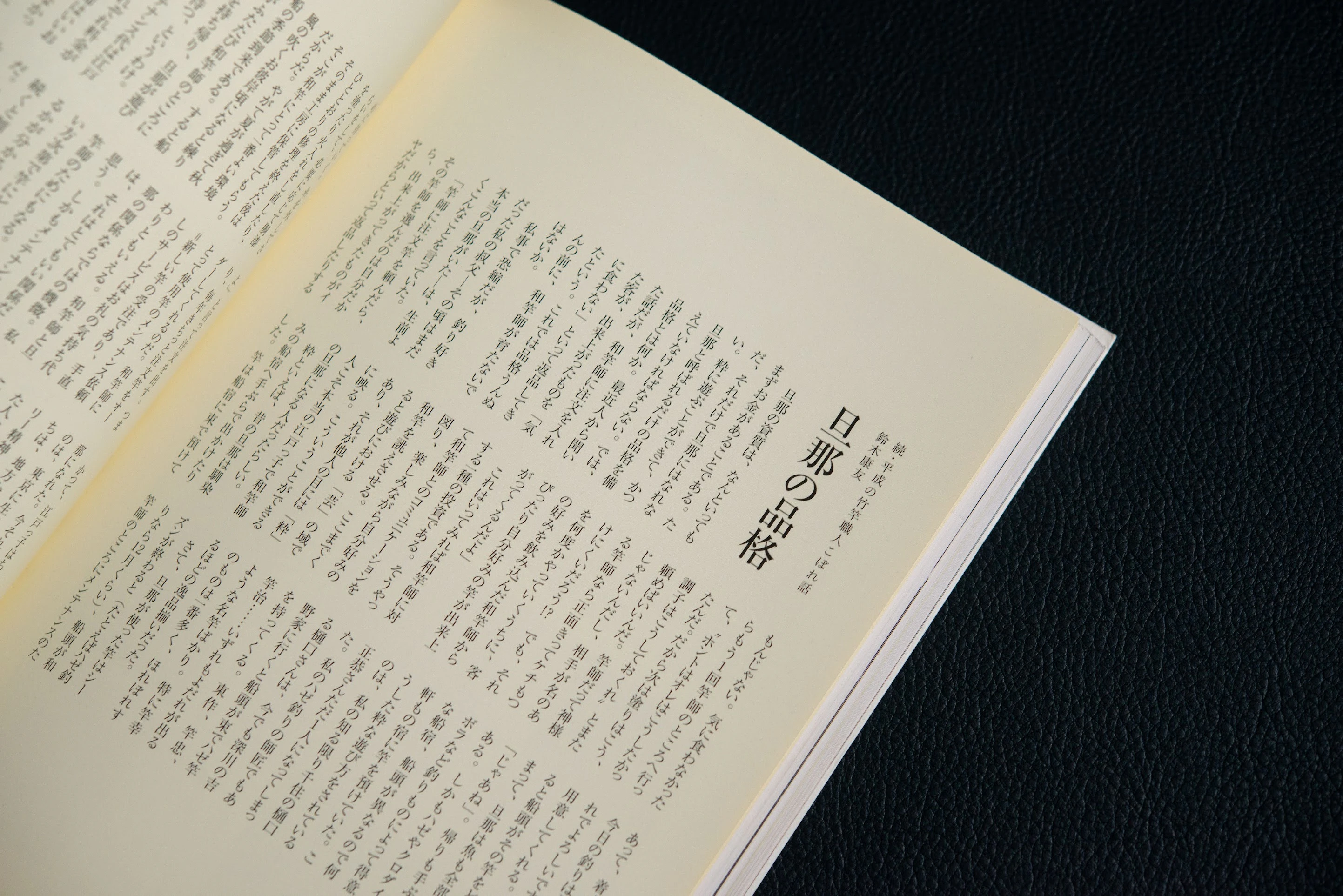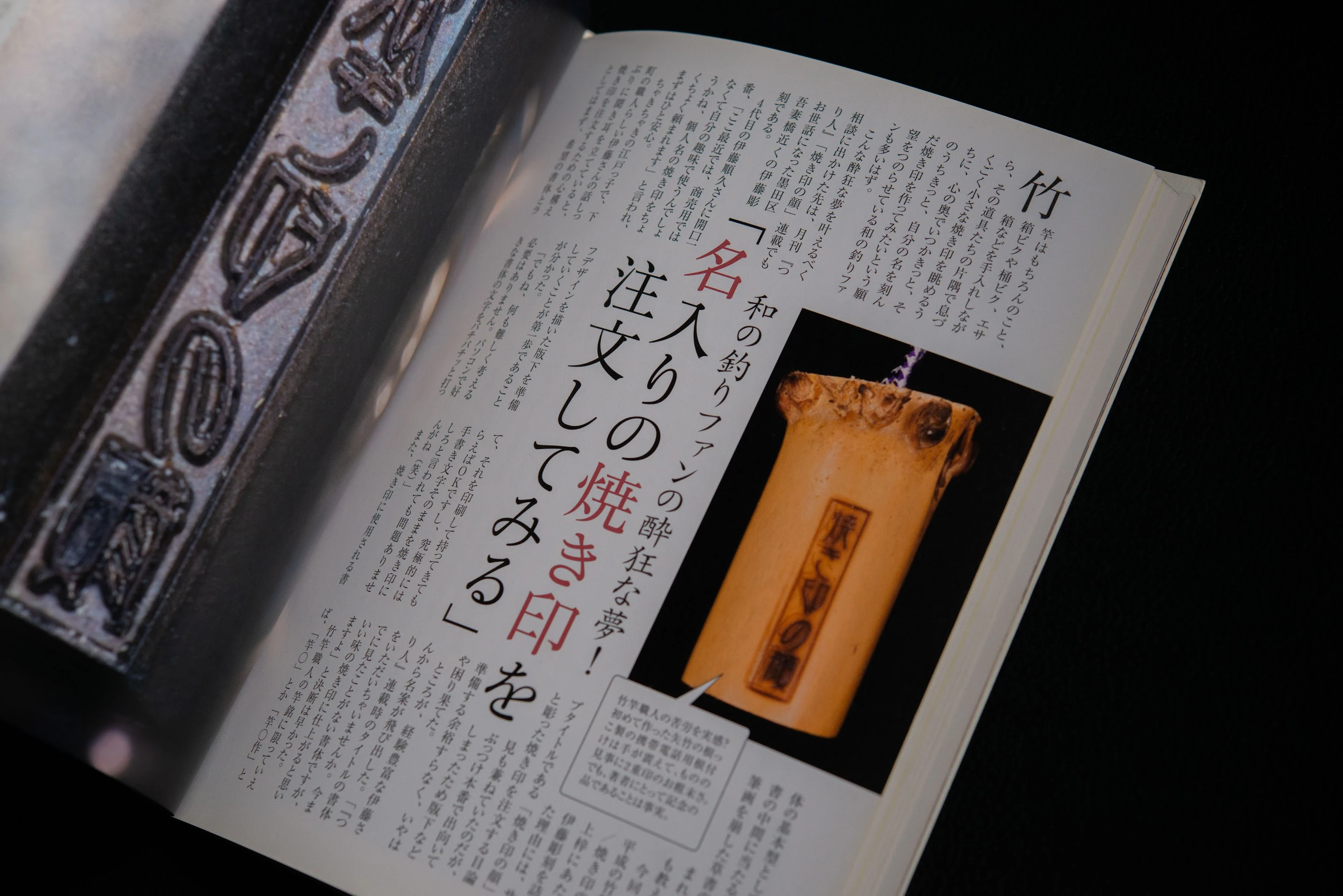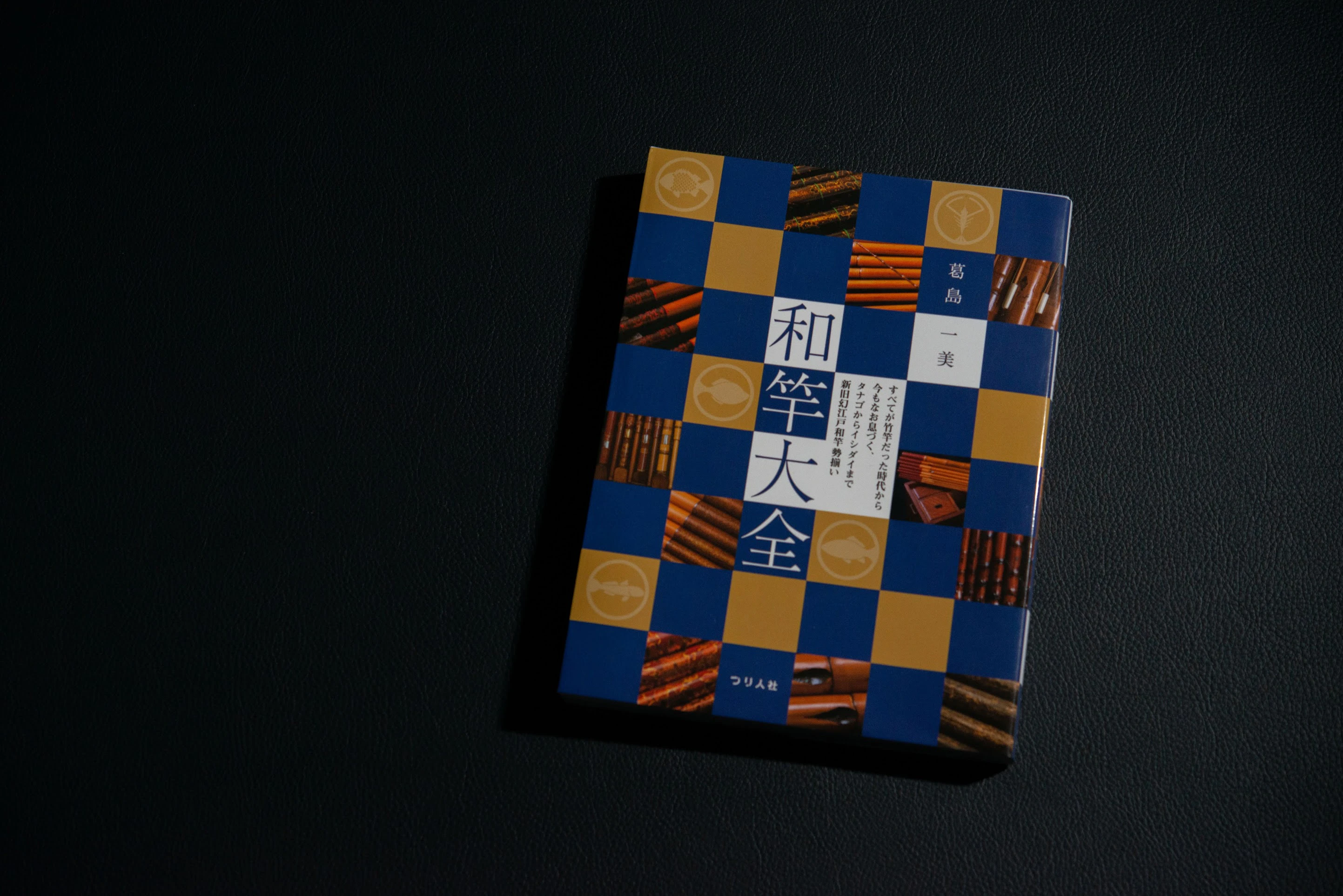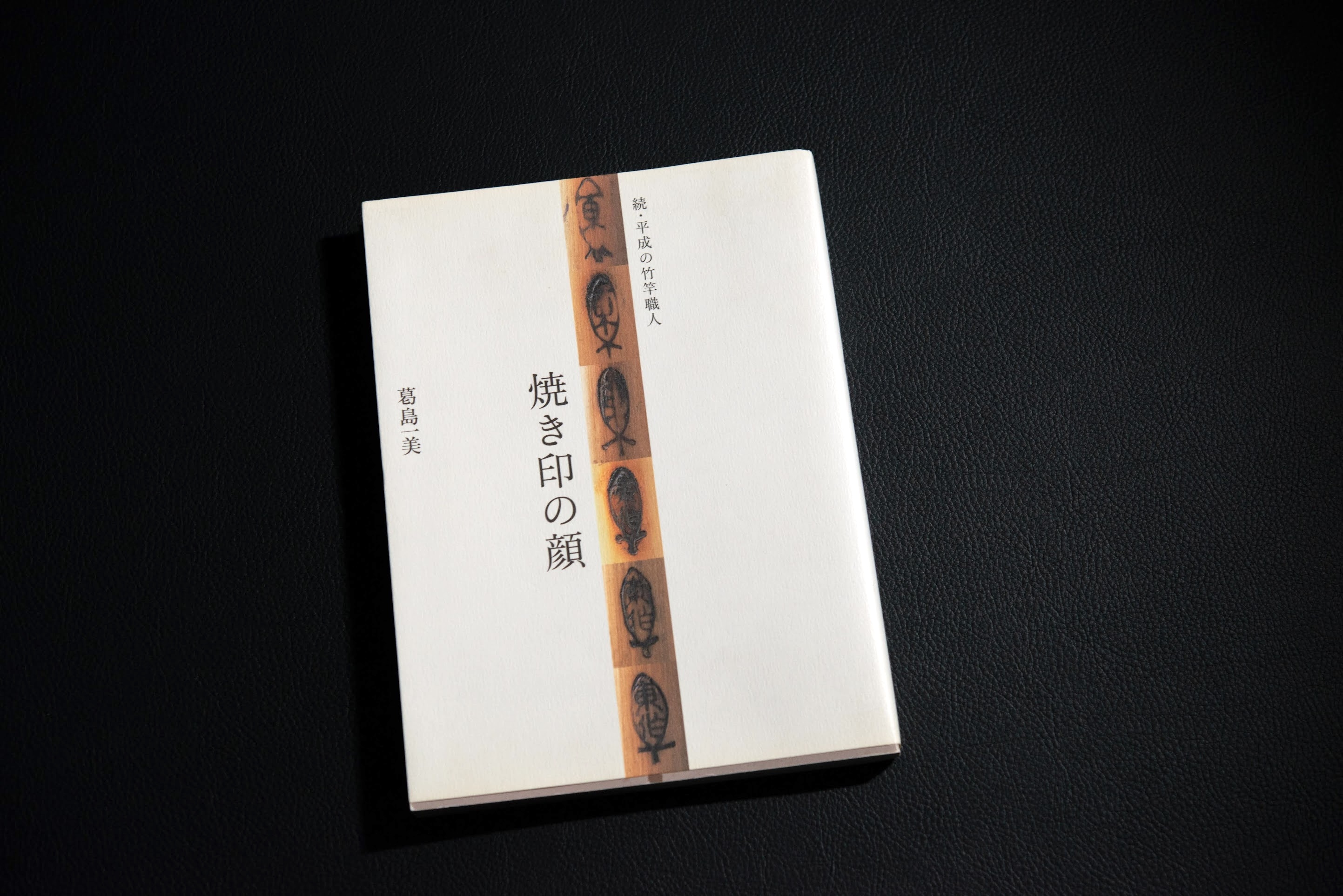
This series features top book recommendations from WAZAO-IPPON members who have delved into Japanese fishing culture. Continuing from our previous installment, we introduce "The Bamboo Rod Craftsman of the Heisei Era: Part II" by Kazumi Katsurashima (2007, Tsuri-Bito), the second volume in the essential "Katsurashima WAZAO Trilogy."
The branding mark is the only clue
**Published five years after the first installment, "The Bamboo Rod Craftsman of the Heisei Era," this book continues the tradition of showcasing individual craftsmen, but with a particular focus on their branding marks.**
In today's world, it's rare to encounter WAZAO or their branding marks directly. However, if you happen to come across a WAZAO in a shop, on the street, or in an old house, the branding mark can be a crucial clue in identifying the rod's origins. The author's aim seems to be to preserve the stories of these craftsmen, centered around their branding marks, for just such occasions.
The five years between the first book and this one likely saw many rod makers retiring, leaving only a few active today. But with the branding marks and this book, WAZAO can transcend mere materials and function, and begin to tell the stories behind them.
Although this book is almost entirely filled with photos of branding marks, it stands as an invaluable resource for future WAZAO enthusiasts. Thanks to this book, it’s possible to "discover" WAZAO hidden in the corners of the world. In this sense, it is one of the rare practical guides to WAZAO.
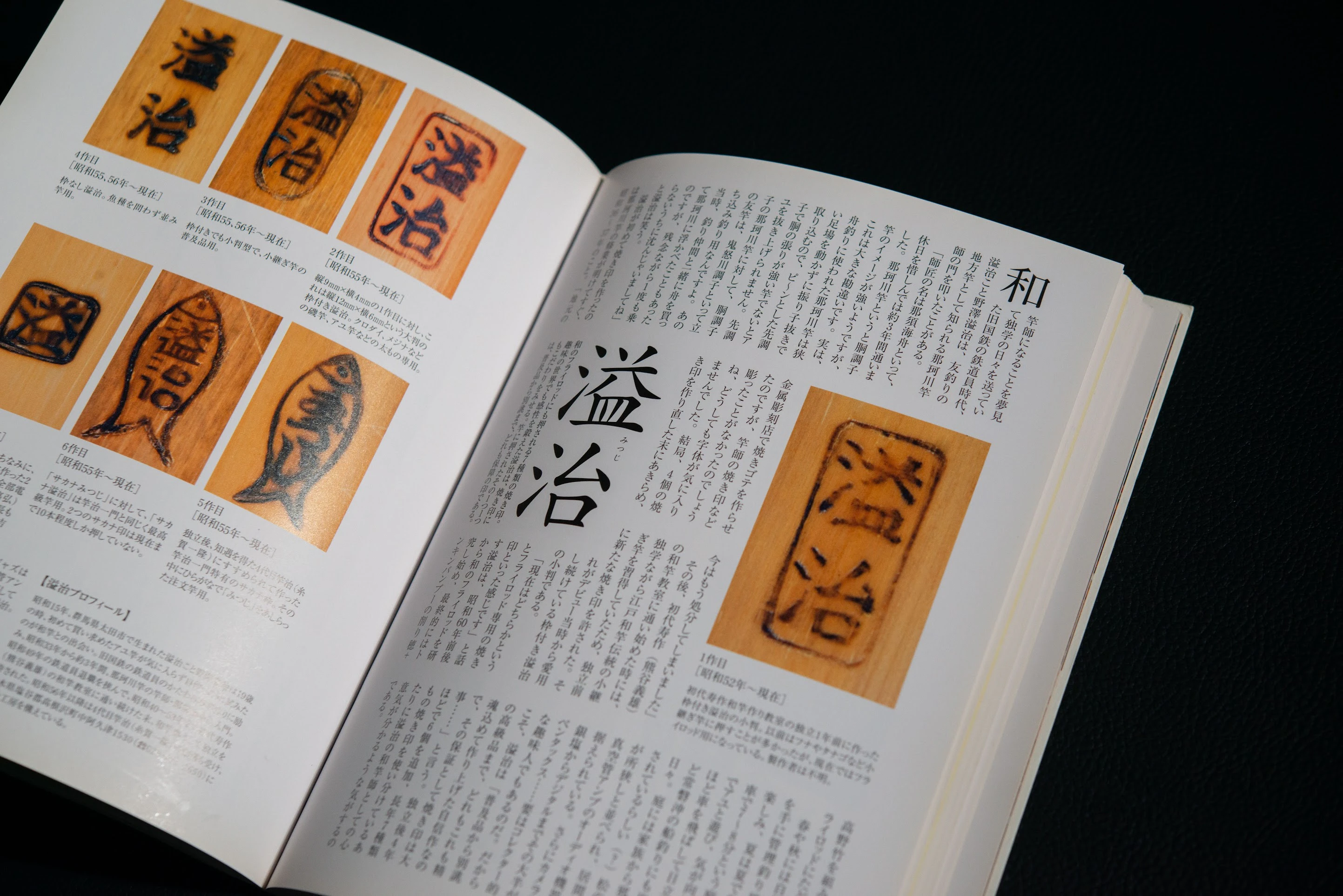
Even within the work of the same rod maker, the branding marks vary across different eras and generations.
vertical connections
The photos in this volume primarily feature branding marks, with fewer images of the rods themselves. This might make the book seem less accessible at first glance. However, it actually offers a more vivid portrayal of the human stories behind each rod maker. The portraits of the craftsmen also feel closer and more intimate compared to the previous work.
While the previous volume focused on the stories of contemporary craftsmen, this one extends the narrative to include their predecessors and even those before them, all through the lens of the branding marks. In other words, the first book can be seen as the "horizontal thread" that illustrates the current relationships and connections among craftsmen, while this book serves as the "vertical thread," tracing their history, background, and lineage. Together, these two works provide a richer, more detailed picture of the unique personalities and backgrounds of the rod makers.
In the end, we’ll likely find ourselves revisiting both volumes time and time again.
